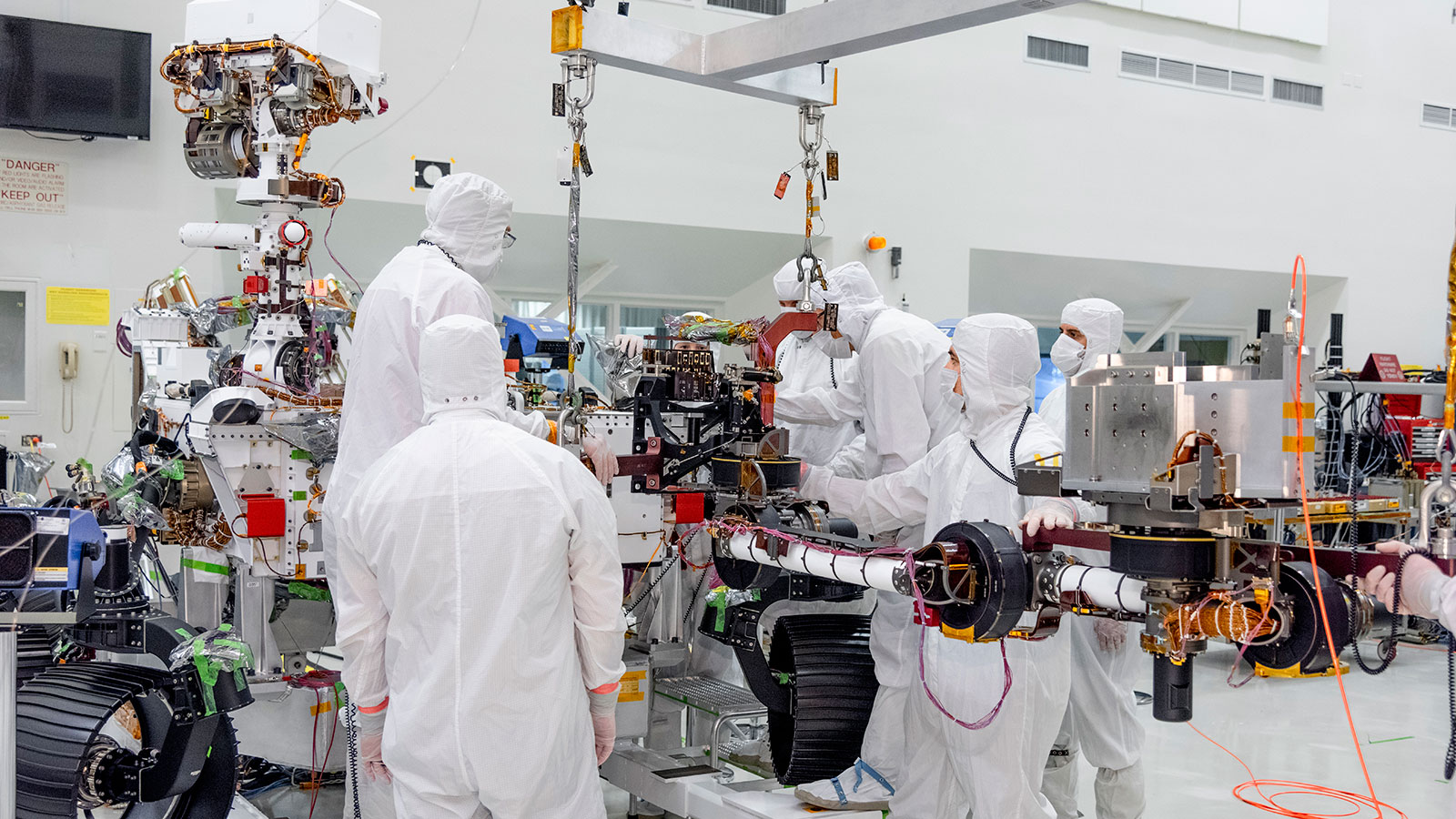
NASA’s Jet Propulsion Laboratory continues to make progress on preparing the Mars 2020 rover for its upcoming mission. Recently the rover had its six wheels fitted so it can traverse the Martian surface, and now it has had its robotic arm installed as well.
The robotic arm is a complex piece of machinery in its own right, consisting of five electrical motors and five joints — the shoulder azimuth joint, the shoulder elevation joint, the elbow joint, the wrist joint, and the turret joint. In total the arm is 7 feet (2.1 meters) in length and will be used to move around and use scientific tools.
At the end of the arm is the turret, which acts as the rover’s “hand” and includes equipment such as high-definition cameras, science instruments, and a percussive drill and coring mechanism.
The rover will eventually have two arms: The main robotic arm which was just installed, as well as a smaller arm which will be installed inside the rover to handle samples of Martian rock and soil.
After its launch in 2020, the rover will touch down in an area of Mars called the Jezero Crater which is thought to be the site of an ancient Martian lake. It will collect samples of rocks in the area and observe the structure of the sediment to give scientists clues as to whether there was once liquid water on the planet’s surface. It will collect both visual information, using high definition color cameras, and geological samples using its arm to be brought back to Earth for study.
The NASA engineers are clearly having fun updating the public about the progress on the rover. “You have to give a hand to our rover arm installation team,” Ryan van Schilifgaarde, a support engineer at JPL for Mars 2020 assembly, said in a statement. “They made an extremely intricate operation look easy. We’re looking forward to more of the same when the arm will receive its turret in the next few weeks.”


